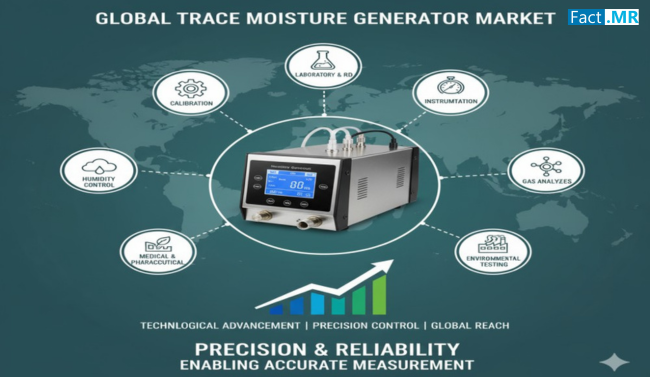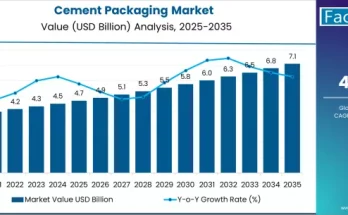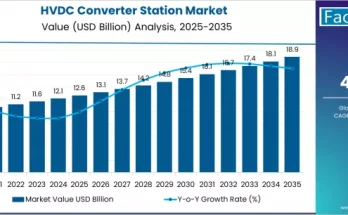Accurate gas analysis is critical across various industrial applications, from petrochemical processing to pharmaceuticals. Trace moisture generators (TMGs) have emerged as essential instruments to provide precise, reproducible moisture levels in gas streams for calibration, testing, and quality assurance purposes. The global trace moisture generator market is growing steadily, driven by industrial automation, stringent quality standards, and increasing regulatory compliance requirements. As industries focus on accurate moisture monitoring to enhance product quality, reduce operational risks, and maintain equipment integrity, the demand for advanced TMG solutions continues to rise.
Market Overview
Trace moisture generators are specialized devices that deliver controlled, precise moisture content in gas streams. These generators are crucial for calibrating analytical instruments such as hygrometers, moisture analyzers, and gas chromatographs. By ensuring the accurate measurement of moisture at trace levels, TMGs help prevent measurement errors that can compromise safety, product quality, and regulatory compliance.
Industries rely on TMGs to meet ISO, ASTM, and other global standards. They are widely used in laboratories, industrial gas production facilities, chemical plants, and environmental testing applications. Their significance has increased with the rising adoption of high-precision manufacturing processes and automated gas analysis systems, where even minute moisture variations can impact processes and outcomes.
Key Applications of Trace Moisture Generators
TMGs serve diverse industries and use cases:
- Petrochemical and Gas Processing: Accurate moisture measurement prevents corrosion and optimizes processes in gas pipelines and refining operations.
- Pharmaceuticals: Moisture-sensitive drugs and chemicals require controlled humidity levels, necessitating precise calibration using TMGs.
- Electronics Manufacturing: Semiconductor and battery manufacturing demand ultra-dry conditions, making TMGs critical for quality assurance.
- Environmental Monitoring: TMGs support calibration of gas analyzers for environmental compliance and air quality assessment.
- Industrial Gas Production: Ensuring the purity and quality of oxygen, nitrogen, hydrogen, and other gases depends on accurate moisture analysis.
Key Drivers of Market Growth
- Stringent Quality and Regulatory Standards:
Industrial and laboratory applications require accurate calibration of moisture analyzers to comply with ISO, ASTM, and other standards. This drives consistent demand for high-precision TMGs. - Rise in Industrial Automation:
Automated gas analysis systems demand reliable and reproducible calibration gases. TMGs are integral to maintaining accuracy in automated pipelines, process controls, and laboratory instrumentation. - Growth in Pharmaceuticals and Electronics:
Industries producing moisture-sensitive products are expanding globally. With increasing focus on quality control and process optimization, demand for trace moisture generators is expected to increase steadily. - Technological Advancements:
Manufacturers are investing in innovations such as digital interfaces, real-time monitoring, and improved humidity stability. Compact, energy-efficient, and modular TMGs enhance operational convenience and accuracy. - Global Expansion of Laboratory Infrastructure:
Emerging economies are establishing advanced laboratories and industrial testing facilities, boosting the adoption of TMGs for calibration and research purposes.
Regional Insights
North America:
The region leads the market due to stringent environmental and industrial quality standards. Laboratories, semiconductor manufacturing plants, and gas production facilities are key consumers of TMGs. Increasing investment in R&D and technology adoption further drives market growth.
Europe:
European demand is driven by regulatory compliance, the presence of major industrial hubs, and adoption of high-precision measurement technologies. Sustainable industrial practices and quality standards encourage deployment of advanced TMG solutions.
Asia-Pacific:
The Asia-Pacific market is experiencing rapid growth, led by China, India, and Japan. Expansion of pharmaceutical, chemical, and electronics manufacturing sectors creates opportunities for TMG suppliers. Government initiatives for industrial modernization and laboratory infrastructure development further support growth.
Latin America and Middle East & Africa:
These regions present growth opportunities, especially in industrial gas production and oil & gas sectors. Adoption is gradually increasing as awareness of calibration and quality assurance grows.
Key Trends
- Integration with Digital and IoT Platforms:
Trace moisture generators are increasingly being integrated with digital systems for real-time data monitoring, remote control, and predictive maintenance. - Compact and Modular Designs:
Manufacturers are offering portable and modular TMGs to improve installation flexibility, reduce space requirements, and facilitate use in multiple sites. - High Stability and Accuracy:
Advancements in material and sensor technologies are enhancing the stability of moisture levels, even in fluctuating environmental conditions. - Energy Efficiency and Sustainability:
Newer TMG models focus on reduced energy consumption and environmentally-friendly designs, aligning with global sustainability initiatives. - Customizable Output Levels:
Flexible and precise moisture generation across a wide range of concentrations enables TMGs to cater to varied industry applications, enhancing their versatility.
Challenges in the Market
Despite its potential, the trace moisture generator market faces challenges:
- High Initial Costs: Advanced TMGs with precise controls and digital integration can be expensive for smaller labs or emerging markets.
- Technical Complexity: Operating and maintaining high-precision TMGs require skilled personnel. Lack of expertise can limit adoption in certain regions.
- Competition from Alternatives: Other calibration methods or inline moisture measurement systems may compete with TMGs in specific applications.
Competitive Landscape
The trace moisture generator market is fragmented, comprising global equipment manufacturers and specialized suppliers. Companies are competing through product innovation, technological integration, and after-sales service. Key strategies include:
- Development of TMGs with higher accuracy, reduced response times, and wider operational ranges
- Integration with smart monitoring and IoT capabilities
- Expansion into emerging markets with cost-effective solutions
- Offering training, maintenance, and calibration services to enhance customer retention
Collaborations between TMG manufacturers and industrial gas suppliers or laboratory equipment providers are becoming common, ensuring end-to-end solutions for customers.
Future Outlook
The trace moisture generator market is poised for growth, driven by expanding applications in high-precision industrial processes and increasing regulatory requirements. Automation, IoT integration, and sustainable technologies are expected to define the next phase of growth. Emerging economies with expanding industrial and laboratory infrastructure present significant opportunities for market expansion.
As industries continue to focus on operational efficiency, product quality, and compliance, trace moisture generators will remain indispensable for accurate calibration and moisture management, ensuring reliable industrial and laboratory operations.
Conclusion
Trace moisture generators are integral to maintaining precision in moisture measurement across multiple industries. With growing industrial automation, stringent quality requirements, and rising awareness of calibration importance, the TMG market is set to expand globally. Manufacturers focusing on innovation, digital integration, and energy-efficient designs are likely to lead the market. For industries, adopting advanced TMG solutions ensures accuracy, operational efficiency, and regulatory compliance, positioning trace moisture generators as a critical tool in modern industrial and laboratory environments.



